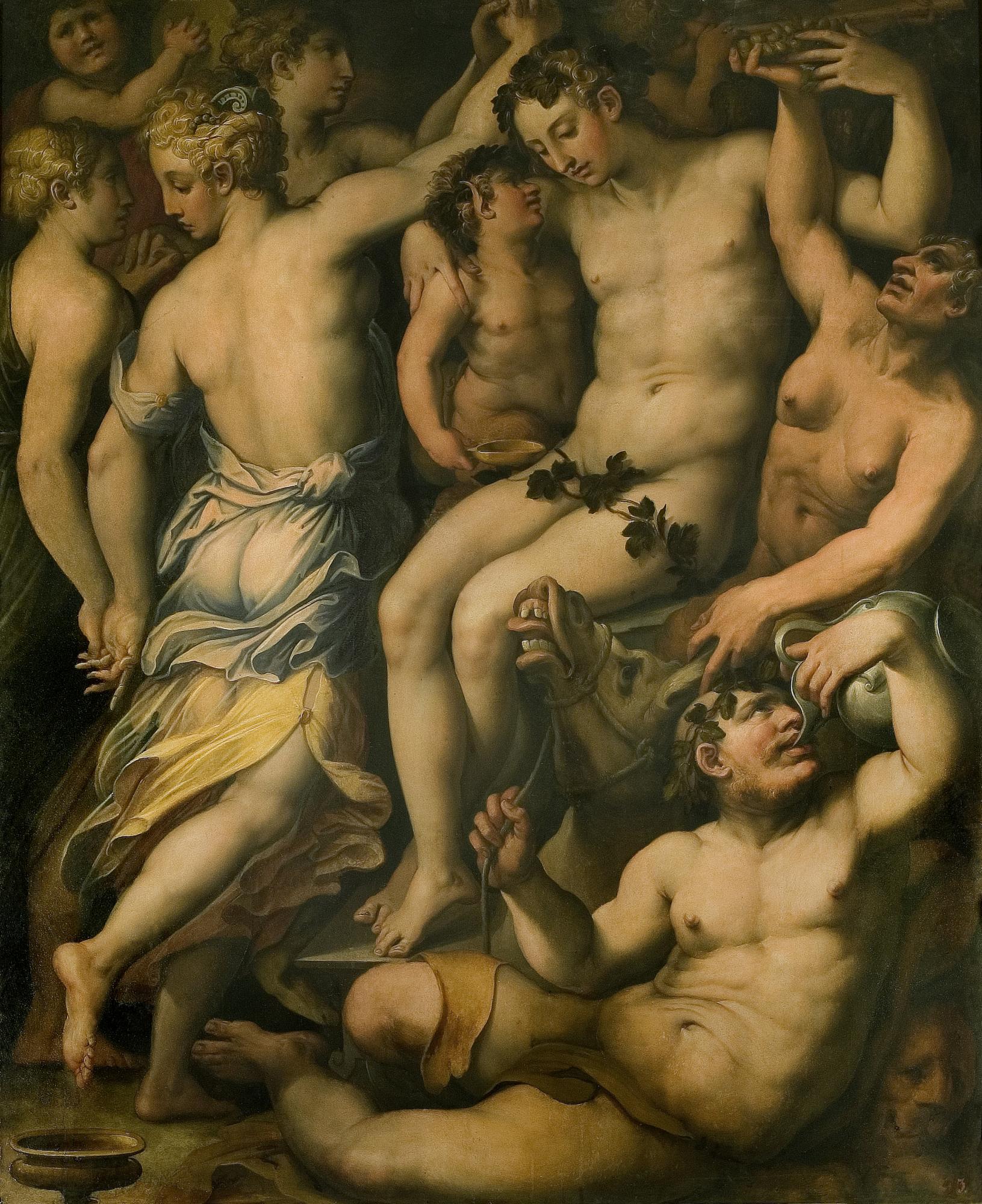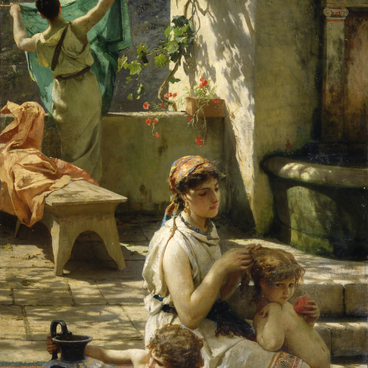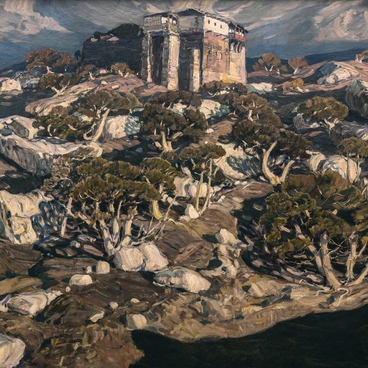Italian painter Giorgio Vasari painted the Triumph of Bacchus in the late 1560s and early 1570s. Sketches of this painting are kept in the Louvre in Paris and the Uffizi Gallery in Florence. In Russia Vasari’s works are practically absent, so the Triumph of Bacchus is a valuable exhibit of the collection of the Radishchev Museum.
Triumph of Bacchus
Creation period
late 1560s - early 1570s
Dimensions
171x137 cm
272x137 cm
272x137 cm
Technique
Wood, oil
Collection
12
Open in app#3
Giorgio Vasari
Triumph of Bacchus
#2
#4
In the painting Vasari depicted a bacchanalia - a holiday in honor of the god of winemaking Bacchus. The artist depicted the god in the center, and thus divided the composition into two parts. On the left he placed young bacchantes - constant companions and admirers of the god. On the right there are the figures of Silenus, the tutor of Bacchus, and an old bacchante. With his right hand Bacchus hugs a little Satire.
#5
Complex multi-figure compositions are a characteristic feature of Vasari’s creative work. He used this technique in the painting the Triumph of Bacchus, with only one correction - traditionally bacchanalia were depicted against the background of nature. Here the artist rejected this interpretation of the plot, and built the composition so that the bodies of the characters filled the entire space.
Vasari used high-quality materials, so the author’s painting is perfectly preserved. Over 450 years since its creation, the painting has hardly been renovated. The frame is made of wood with gold carvings. Researchers believe that the framing was created according to the artist’s project, around the same time, as the painting itself.
#6
In addition to paintings, Vasari designed buildings and wrote scientific works. In 1550 he compiled the Biography - a collection of 178 biographies of Italian artists. For this work he is considered the founder of history of art. However for Vasari painting was more important than literature.
#7
He wrote:
‘My hands are more accustomed to brushes than to the pen… My head is occupied with drawings rather than with writing’.
#8
Vasari worked at the court of the Medici family. They were the main patrons of Italian artists at that time. It is possible that Vasari created the Triumph of Bacchus on their order.
#9
For a long time the image was kept in the family of Florentine bankers Gerini. In the 19th century, their collection was sold at an auction. The Triumph of Bacchus came to Russia in 1850. The Imperial Hermitage in St. Petersburg acquired it from the artist August Ribela. In 1885 the painting was transferred to the Radishchev Museum in Saratov.
#10
A.N. Radishchev Saratov State Museum of Fine Arts
read morehide
00:00
00:00
1x
Triumph of Bacchus
Creation period
late 1560s - early 1570s
Dimensions
171x137 cm
272x137 cm
272x137 cm
Technique
Wood, oil
Collection
12
Open in app
Share



